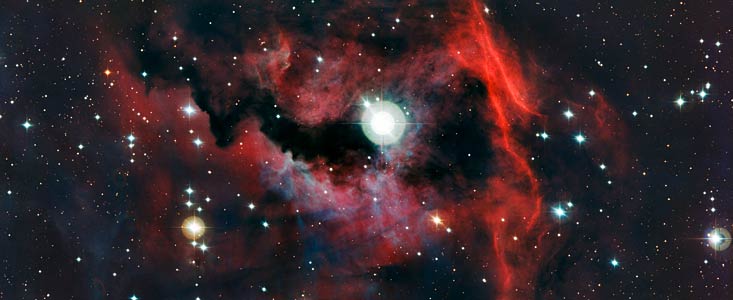The video sequence, below, starts with a broad view of the Milky Way before closing in on the familiar bright star Sirius and the nearby constellation of Orion (The Hunter). We see a faint red object resembling a bird in flight — the Seagull Nebula (IC 2177) and zoom in on what turns out to be a dramatic star formation region. The final view of the head part of the seagull is a new detailed image from the Wide Field Imager on the MPG/ESO 2.2-metre telescope.
Nebulae are among the most visually impressive objects in the night sky. They are interstellar clouds of dust, molecules, hydrogen, helium and other ionised gases where new stars are being born.

This new image from the Wide Field Imager on the MPG/ESO 2.2-metre telescope at ESO’s La Silla Observatory in Chile shows the head part of the Seagull Nebula. It is just one part of the larger nebula known more formally as IC 2177, which spreads its wings with a span of over 100 light-years and resembles a seagull in flight. This cloud of gas and dust is located about 3700 light-years away from Earth.
The Seagull Nebula lies just on the border between the constellations of Monoceros (The Unicorn) and Canis Major (The Great Dog) and is close to Sirius, the brightest star in the night sky. The nebula lies more than four hundred times further away than the famous star.
The complex of gas and dust that forms the head of the seagull glows brightly in the sky due to the strong ultraviolet radiation coming mostly from one brilliant young star — HD 53367 — that can be spotted in the centre of the image and could be taken to be the seagull’s eye.
The radiation from the young stars causes the surrounding hydrogen gas to glow with a rich red color. Light from the hot blue-white stars is also scattered off the tiny dust particles in the nebula to create a contrasting blue haze in some parts of the picture.
Although a small bright clump in the Seagull Nebula complex was observed for the first time by the German-British astronomer Sir William Herschel back in 1785, the part shown here had to await photographic discovery about a century later.











